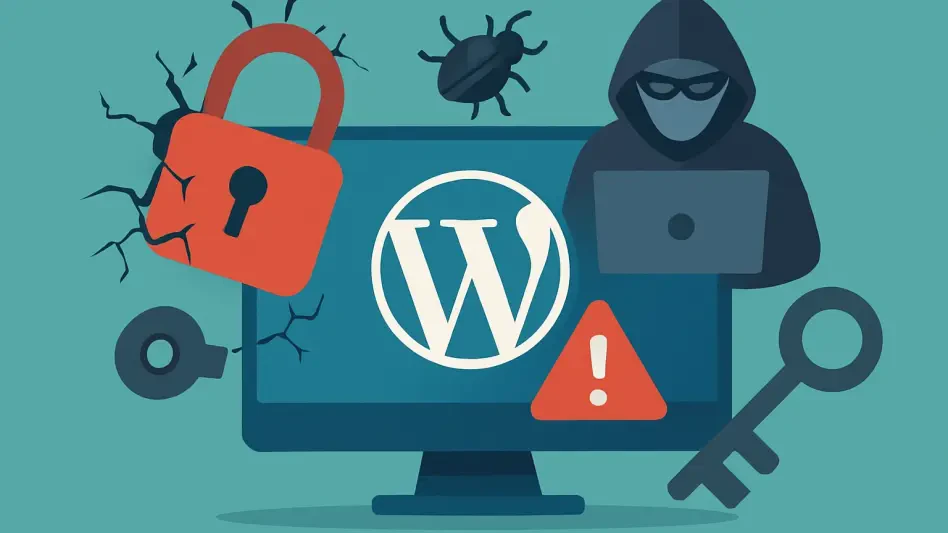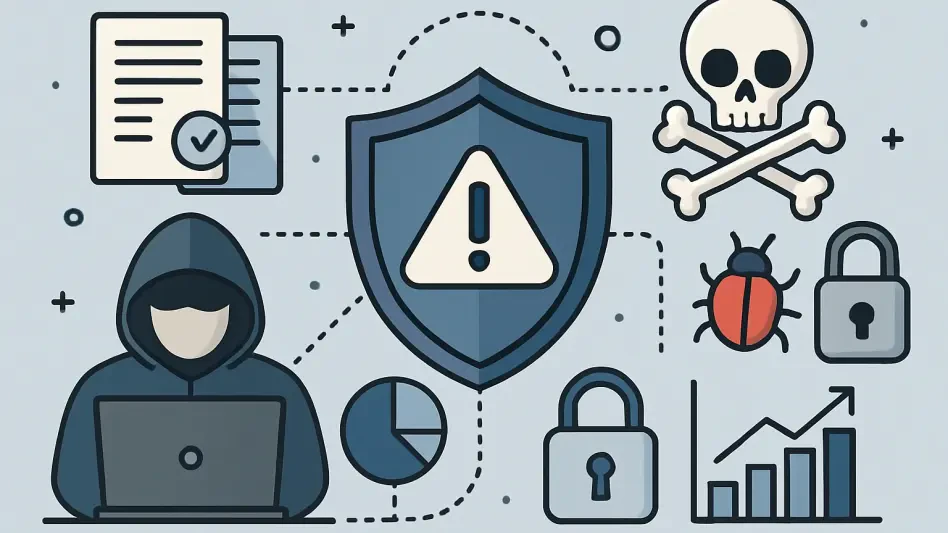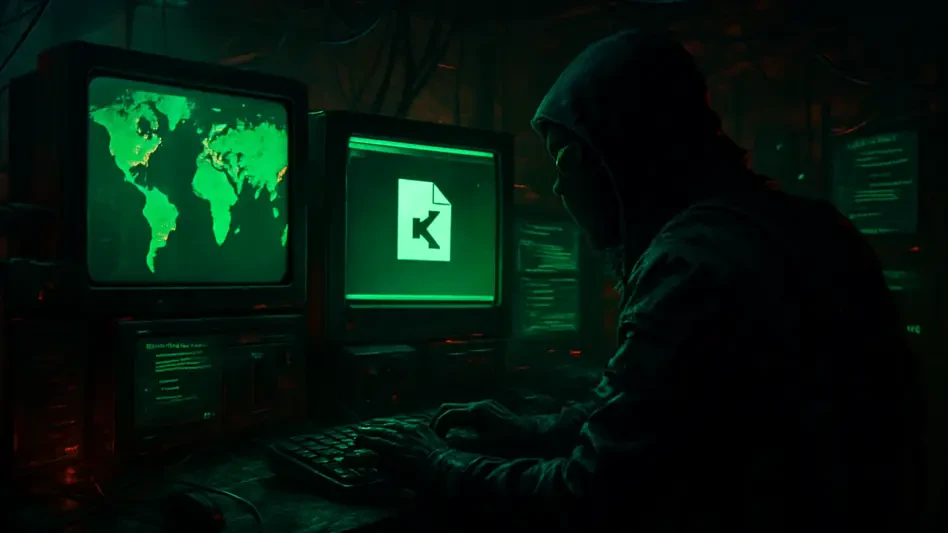In an era where digital presence is paramount, the security of over 40% of the web’s content management systems—powered by WordPress—has come under intense scrutiny, with a staggering 9 million exploit attempts targeting vulnerabilities in popular plug-ins like GutenKit and Hunk Companion blocked in a single month. This alarming statistic reveals a gaping hole in cybersecurity defenses, prompting this roundup to dive into the active exploitation of critical flaws in these tools, gathering insights from industry professionals and security experts to explore the risks, systemic issues, and urgent solutions needed to protect thousands of websites from devastating attacks.
Diving into the Threat Landscape: What Experts Are Saying
The discovery of year-old vulnerabilities in GutenKit, used by over 40,000 sites, and Hunk Companion, installed on around 8,000 sites, has sent shockwaves through the WordPress community. Since early October, attackers have relentlessly targeted three severe flaws—CVE-2024-9234, CVE-2024-9707, and CVE-2024-11972—enabling unauthenticated access to install malicious plug-ins and potentially execute remote code. Security analysts emphasize the alarming scale of exploitation attempts, highlighting how these gaps expose a significant portion of online platforms to compromise.
Differing perspectives emerge on the root causes of this crisis. Some cybersecurity specialists point to technical oversights in the plug-ins’ REST API, where inadequate capability checks create open doors for attackers. Others argue that the real issue lies in the delayed response to available patches, noting that many site administrators remain unaware of the fixes released a full year ago. This divide in opinion underscores a critical need for both better design practices and improved communication within the ecosystem.
A third angle focuses on the sheer volume of attacks as a wake-up call. With millions of exploit attempts thwarted by firewalls in a short span, industry voices stress that this incident reflects the growing sophistication of cybercriminals. There’s a consensus that such persistent targeting demands a reevaluation of how security threats are prioritized, especially for widely adopted open-source tools that power a vast digital landscape.
Systemic Challenges in WordPress Security: A Broader View
Technical Flaws and Patching Delays: Where the Fault Lies
At the heart of the vulnerabilities lie specific technical missteps within the affected plug-ins. Experts in software security highlight that the lack of robust authentication mechanisms in API endpoints allows attackers to bypass safeguards with ease. This design flaw, while fixable, has lingered unaddressed on countless sites, amplifying the risk of unauthorized access and code execution.
Beyond the code itself, attention turns to why so many installations remain unpatched. A significant portion of feedback from the field suggests that site owners often lack the technical know-how or resources to apply updates promptly. This gap in action reveals a disconnect between the release of solutions and their implementation, leaving a window of opportunity for malicious actors to exploit.
Some industry observers take a more critical stance, arguing that the responsibility doesn’t rest solely with end users. They contend that plug-in developers and the broader WordPress community must improve how updates are communicated and automated. This perspective pushes for systemic changes, such as mandatory notifications or forced updates for critical fixes, to close the exposure window faster.
Management Mishaps: Non-Technical Teams in the Hot Seat
Another layer of concern centers on who manages WordPress environments. Many professionals note that these platforms are frequently overseen by marketing or communications teams rather than IT specialists, leading to significant oversight in security practices. Without proper training, these groups often miss critical updates or fail to recognize the importance of timely action.
This operational weakness has real-world consequences, as delayed patching can result in catastrophic breaches. Security consultants emphasize that a lack of awareness among non-technical staff creates a perfect storm when paired with sophisticated exploits. The result is an environment where websites become easy targets for attackers seeking to infiltrate through known vulnerabilities.
A contrasting viewpoint suggests shared responsibility as a potential remedy. Some experts advocate for frameworks where IT departments collaborate closely with other teams, ensuring that security protocols are understood and followed across the board. This approach aims to bridge the knowledge gap, fostering a culture of accountability that could mitigate risks stemming from mismanagement.
Open-Source Dependency: A Double-Edged Sword
The reliance on open-source software like WordPress plug-ins brings both innovation and vulnerability, according to industry analysis. Data shared by security researchers reveals that component usage in applications has surged dramatically over recent years, yet a vast majority run outdated versions, often lagging multiple releases behind. This trend of neglect heightens exposure to attacks, as seen in the current exploitation wave.
Regional differences in technology adoption also play a role, with some experts pointing out that disparities in resources and expertise create uneven vulnerability management. In areas with limited access to training or updates, websites remain at higher risk, exacerbating the global impact of unpatched flaws. This observation calls for tailored strategies to address localized challenges within the open-source community.
A critical debate arises around the mindset of treating open-source tools as low-maintenance solutions. Many professionals challenge this outdated perception, arguing that it fosters complacency among users who fail to prioritize regular maintenance. Shifting this attitude, they suggest, is essential to combating the recurring exploitation of platforms that millions depend on daily.
Scale of Attacks: A Signal of Evolving Threats
The sheer number of exploit attempts—millions in a single month—serves as a stark indicator of cybercriminal persistence. Security teams report that the aggressive targeting of these plug-ins reflects a broader trend of attackers focusing on widely used software to maximize impact. This pattern raises alarms about the potential for even larger-scale breaches if gaps remain unaddressed.
While firewall protections have successfully blocked many attacks, some analysts warn that this is only a temporary shield. They speculate that the integration of advanced technologies, such as automated exploit tools, could intensify future threats, making current defenses obsolete. This forward-looking concern highlights the urgency of staying ahead of evolving attack methods.
A wider lens reveals parallels with other open-source ecosystems facing similar challenges. Experts draw comparisons to vulnerabilities in different platforms, noting that the WordPress incident is part of a systemic issue of underinvestment in security across free software communities. This broader context suggests that lessons learned here could inform strategies to protect a range of digital tools.
Actionable Steps and Key Takeaways from the Discussion
Synthesizing the insights gathered, it’s evident that the exploitation of flaws in GutenKit and Hunk Companion exposed deep-seated issues in WordPress security. Experts unanimously urged immediate patching of the identified vulnerabilities as the first line of defense, stressing that delays in updates were a primary factor in the widespread risk. This actionable advice formed the cornerstone of mitigating immediate threats to tens of thousands of websites.
Beyond patching, there was strong agreement on the need for education across all levels of an organization. Training non-technical teams on basic security protocols emerged as a recurring recommendation, alongside the implementation of regular vulnerability scans to detect issues before they’re exploited. These steps aim to build a proactive rather than reactive approach to site protection.
Finally, many voices advocated for leveraging real-time protection tools and establishing clear accountability for maintenance tasks. Whether through automated monitoring systems or designated security roles, the consensus leaned toward creating structured processes to prevent oversight. These practical tips, drawn from diverse perspectives, offer a roadmap for site owners navigating an increasingly hostile digital environment.
Reflecting on the Insights Gained
Looking back, the roundup of expert opinions painted a comprehensive picture of the critical vulnerabilities that plagued WordPress plug-ins like GutenKit and Hunk Companion. The discussions illuminated not only the technical flaws but also the operational and cultural barriers that amplified risks for countless websites. It became clear that delayed updates and inadequate training were pivotal contributors to the crisis.
Moving forward, organizations must prioritize robust vulnerability management by integrating automated patching systems and fostering cross-departmental collaboration on security matters. Exploring partnerships with cybersecurity providers for ongoing monitoring could further strengthen defenses. Additionally, delving into community-driven resources within the WordPress ecosystem offers a wealth of knowledge to stay informed about emerging threats and best practices, ensuring resilience against future exploits.








